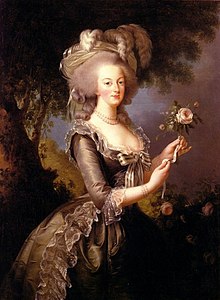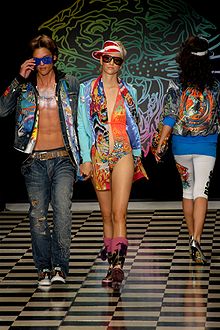For further details of the historical contributions of time, see History of Western fashion.

 The first Western travelers, whether to Persia, Turkey and China, which is often the lack of changes in fashion, and lewd comments from observers from other cultures in the pace of Western fashion, which many felt suggested an instability and lack Remark of order in Western culture. Shogun Japanese secretary boasted (not exactly) a Spanish visitor in 1609 that Japanese clothing had not changed for more than a thousand years [2]. But in the Ming China, for example, there is strong evidence for rapid changes in China clothes pattern [3]. The costume changes often found in times of economic or social (as in ancient Rome and the medieval caliphate), but then followed a long period without major changes. This was in the eighth century Muslim Spain, where the famous musician Ziryab introduced sophisticated clothing styles on seasonal and daily schedules of his native city of Baghdad and his own inspiration in Cordoba in Al-Andalus on. [4] [5] Similar changes in fashion in the Middle East occurred since 11 Century, after the arrival of the Turks who introduced the style of the dress of Central Asia and the Far East [6].
The first Western travelers, whether to Persia, Turkey and China, which is often the lack of changes in fashion, and lewd comments from observers from other cultures in the pace of Western fashion, which many felt suggested an instability and lack Remark of order in Western culture. Shogun Japanese secretary boasted (not exactly) a Spanish visitor in 1609 that Japanese clothing had not changed for more than a thousand years [2]. But in the Ming China, for example, there is strong evidence for rapid changes in China clothes pattern [3]. The costume changes often found in times of economic or social (as in ancient Rome and the medieval caliphate), but then followed a long period without major changes. This was in the eighth century Muslim Spain, where the famous musician Ziryab introduced sophisticated clothing styles on seasonal and daily schedules of his native city of Baghdad and his own inspiration in Cordoba in Al-Andalus on. [4] [5] Similar changes in fashion in the Middle East occurred since 11 Century, after the arrival of the Turks who introduced the style of the dress of Central Asia and the Far East [6]. The beginnings of the habit in Europe of continual change and fastest growing in the styles of clothing can be very reliable from the mid-14th Century, the date, historians including James Laver and Fernand Braudel early Western fashion in clothing [7]. [8] The most dramatic manifestation was a drastic and sudden contraction of the men on clothing, mid-calf barely cover the buttocks, sometimes seen with stuffing on the chest accompanied greater. This created the distinctive Western male style of a summit on measures in connection with leggings or pants.
The beginnings of the habit in Europe of continual change and fastest growing in the styles of clothing can be very reliable from the mid-14th Century, the date, historians including James Laver and Fernand Braudel early Western fashion in clothing [7]. [8] The most dramatic manifestation was a drastic and sudden contraction of the men on clothing, mid-calf barely cover the buttocks, sometimes seen with stuffing on the chest accompanied greater. This created the distinctive Western male style of a summit on measures in connection with leggings or pants.Marie Antoinette was a fashion icon
The pace of change has accelerated in the next century, and women and men of fashion, especially in the clothing and adorn the hair, became equally complex and changing. Art historian, that is in a position to fashion in dating images to increase confidence and precision, often use within five years for the images of the 15th Century. Initially changes in fashion led to a fragmentation of the previously very similar styles of dressing the upper classes of Europe and the development of specific national styles were. They were very different, until a movement against the age classes 17-18 imposed similar styles, most of the old regime in France. [9] Although the rich mode usually shows the growing wealth of modern Europe led to the bourgeoisie and the peasants, even following trends at a distance sometimes uncomfortably, close to the elite, as a factor Braudel as an important engine for change in the fashion [10].
Albrecht Dürer's drawing contrasts a well-dressed middle-Nuremberg (left) with his counterpart in Venice. The Venetian pints high, it makes
Ten 16th Century portraits of German or Italian gentlemen may show ten entirely different hats, and during this period national differences were more pronounced, as Albrecht Dürer wrote in his actual or composite contrast of Nuremberg and the methods of Venice in the late 15th Century (Figure). The "Spanish style" of the century began, back to synchronicity among upper-class Europeans, and after a fight in the middle of the 17th Century, French styles decisively took over leadership, a process that in the 18th Century completed [11].
Although the colors and patterns of textiles changed from year to year, [12], the cutting of men's shirts and the length of his waistcoat, or the model of a lady, the dress was cut changed more slowly. Menswear are largely derived from military models, and changes in the European male silhouette are in the European theater of war where Lord officers had the opportunity to make notes of foreign styles zinc: An example is the "Steinkerque" tie or cravat.
The pace of change was in the 1780s with the publication of French engravings that showed the increase of the Paris fashion, but it was 16th division of fashion and play dolls from France as patterns since the Century, and Abraham Bosse had produced fashion figures from the year 1620. In 1800, all Western Europeans were dressing the same (or thought they were). Local differences were the first signs of national culture and then a badge of the conservative peasant [13]
Although tailors and dressmakers were no doubt responsible for many innovations before, and led the textile industry sure many trends, fashion history is usually covered [by whom?] On this day in 1858 when the English-born Charles Frederick Worth opened the first true [weasel words] fashion house in Paris. Since then the professional designer has become dominant at a value of more and more, although the origins of many forms of street fashion. For women, the styles of Finn of 1920 marked the most significant change in the style of the centuries, with a drastic reduction in the length skirt, and more flexible in tight clothes, with occasional revivals skirts shorter length forms remained dominant since. The four major fashion capitals is known that currently in Milan, New York, Paris and London. Fashion Weeks are held in these cities, where designers present their collections of clothes, to present new target groups and are home to the most fashionable and are known for their influence in the world of fashion known.
Modern Westerners have a wide selection available in the choice of clothing. What a person chooses to wear reflect the personality of the person or charity. If people start with a new cultural status or have other fashion trend may start. Who or what respect can begin with a similar style.
Fashions may vary considerably within a society according to age, social class, generation, occupation and geography and time. For example, if a person who dresses in the fashion of youth, look he or she ridiculous in the eyes of young and old. General fashionista and fashion victim, to refer to blindly follow someone with the latest fashion.
We consider the system of sport in many ways, as a fashion language incorporating various fashion statements using a grammar of fashion. (Compare some of the work of Roland Barthes.)


0 comments:
Post a Comment